Óðinn
The Allfather
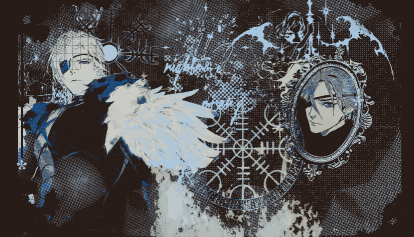
ᛟᚦᛁᚾᚾ
ᚨᛚᚠᛟᚦᚱ
Yfirlit ᚢᚠᛁᚱᛚᛁᛏ
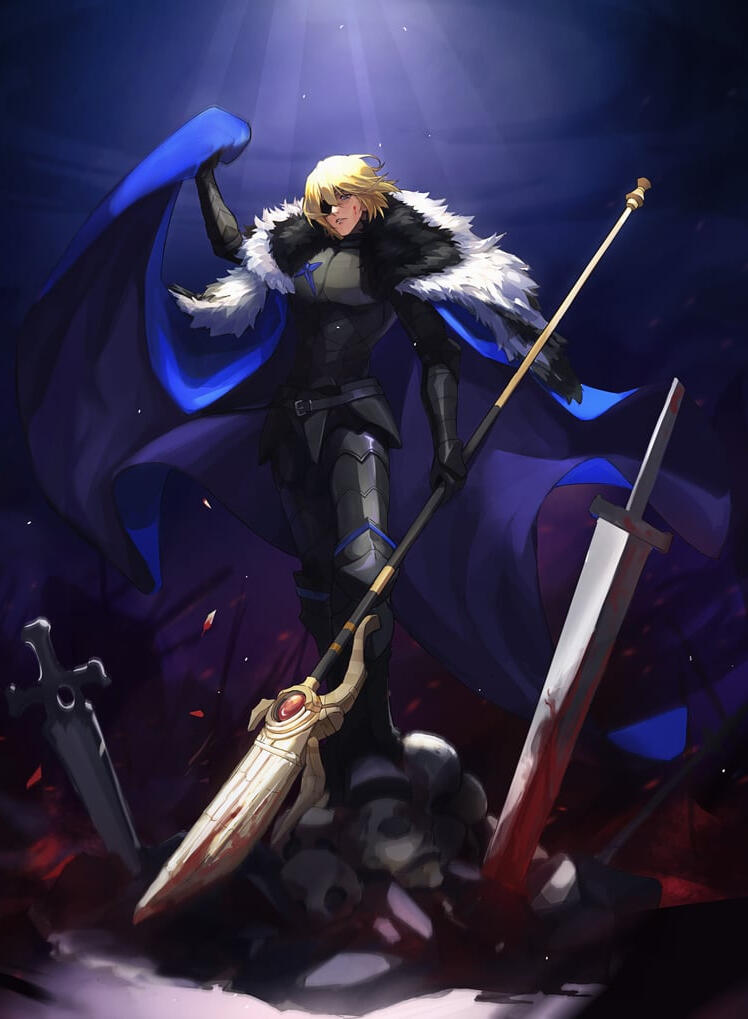
Name: ÓðinnTitles: Alföðr (Allfather)
Hávi (High One)
Faðir Allra (Father of All)
Gagnráðr (The one who gives counsel)
Grímnir (The masked one)
Rúnatal (Interpreter of Runes)
Valföðr (God of the Slain)
Herjaföðr (Father of Hosts)
Víðrir (Battle-Father)
Bileygr (The Shifty-Eyed One)
Galdrföðr (Father of Magic)Age: Predates MankindRace: Æsir God and JötnarFather: BorrMother: BestlaBrothers: Vili, Vé, Loki (Blood Brother)Wife: FreyjaSons: Thor, Baldr, Höðr, Víðarr, Váli, Rindr, Heimdallr, Týr, Bragi, HermóðrFamiliars: Hugin & Munin (Ravens), Geri & Freki (Wolves), Sleipnir (8 legged Horse)Gender: Male, can shapeshift with magicHeight: 6'5 ft/195.58 cm (Can Shapeshift)Sexuality: HeterosexualAlignment: Lawful NeutralAffiliation: Ásgarðr (The Æsir-Vanir Realm)Roles: King of Ásgarðr, Leader of the Wild Hunt, The Chooser of the Slain, The Wanderer
Personality: Odin is a god known for his relentless pursuit of wisdom, having harmed himself before in the past in order to gain more and more of it. Though his fellow Æsir forced him to not continue self harming for this sort of thing.When he picks out which warriors go to Valhalla, most cannot pick out a single exact criteria he is considering, Some still claim it is ferocity in combat, others posit that tacticians too join the ranks of the Einherjar, and others more still have a vain hope he doesn't just pick up souls from the battlefield and actually takes warriors from their deathbed. The truth is within all of these in a way, just twisted and hidden in a way for things to still remain elusive. One thing to note though, he doesn't care about justice and honor in battle, but instead for efficiency and ruthlessness.Odin is a wise ruler who has led the Æsir for its entire existence, but he is also in a contradicting fashion, a trickster. He has his way with wisdom and deceit in equal measure. It is likely the reason why Loki is his Blood-Brother due to that shared trait.Odin is a restless spirit, wandering various realms to accrue knowledge; magical, philosophical, scientific, worldly, all of it is fair game for the God of Wisdom to take in. While traveling he might be honest in his identity, or he might just give one of his pseudonyms depending on the mood.
Saga ᛊᚨᚷᚨ
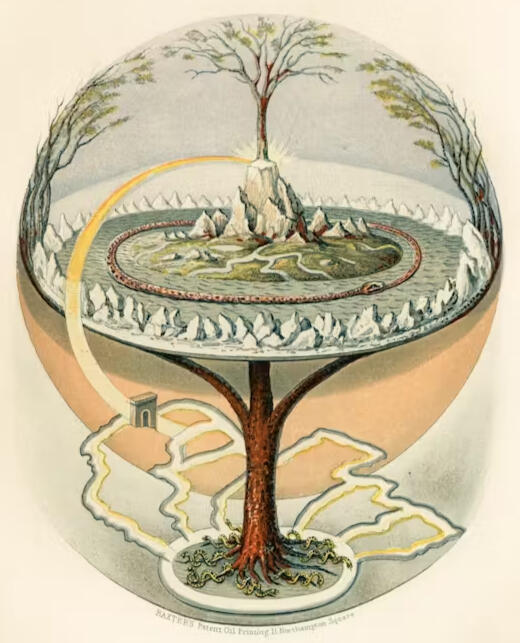
Odin (pronounced “OH-din”; Old Norse Óðinn, Old English and Old Saxon Woden, Old High German Wuotan, Wotan, or Wodan, Proto-Germanic *Woðanaz, “Master of Ecstasy”) is one of the most complex and enigmatic characters in Norse mythology, and perhaps in all of world literature. He’s the ruler of the Aesir tribe of deities, yet he often ventures far from their kingdom, Asgard, on long, solitary wanderings throughout the cosmos on purely self-interested quests. He’s a relentless seeker after and giver of wisdom, but he has little regard for communal values such as justice, fairness, or respect for law and convention. He’s the divine patron of rulers, and also of outlaws. He’s a war-god, but also a poetry-god, and he has prominent “effeminate” qualities that would have brought unspeakable shame to any historical Viking warrior. He’s worshiped by those in search of prestige, honor, and nobility, yet he’s often cursed for being a fickle trickster. What kind of literary figure – let alone a god whose historical worship spanned much of a continent and several centuries – could possibly embody all of these qualities at once, with their apparently glaring contradictions?As mentioned above, Odin’s name can be translated as “Master of Ecstasy.” His Old Norse name, Óðinn, is formed from two parts: first, the noun óðr, “ecstasy, fury, inspiration,” and the suffix -inn, the masculine definite article, which, when added to the end of another word like this, means something like “the master of” or “a perfect example of.” The eleventh-century historian Adam of Bremen confirms this when he translates “Odin” as “The Furious.” Óðr can take countless different forms. As one saga describes Odin, “when he sat with his friends, he gladdened the spirits of all of them, but when he was at war, his demeanor was terrifyingly grim.”This ecstasy that Odin embodies and imparts is the unifying factor behind the myriad areas of life with which he is especially associated: war, sovereignty, wisdom, magic, shamanism, poetry, and the dead.In modern popular culture, Odin is often portrayed as being an eminently honorable ruler and battlefield commander, but to the ancient Norse, he was nothing of the sort. In contrast to more straightforwardly noble war gods such as Tyr or Thor, Odin incites otherwise peaceful people to strife with what, to modern tastes, is a downright sinister glee. His attitude is not far from Nietzsche’s dictum, “You say it is the good cause that hallows even war? I say unto you: it is the good war that hallows any cause.”In keeping with his associations with sovereignty, Odin doesn’t generally concern himself with average warriors, preferring instead to lavish his blessings only on those whom he deems to be worthy of them. Many of the greatest Germanic heroes, such as Starkaðr and the Völsung family, have enjoyed Odin’s patronage.He maintains particularly close affiliations with the berserkers and other “warrior-shamans” whose fighting techniques and associated spiritual practices center around achieving a state of ecstatic unification with certain ferocious totem animals, usually wolves or bears, and, by extension, with Odin himself, the master of such beasts.Thus, as a war-god, Odin is principally concerned not with the reasons behind any given conflict or even its outcome, but rather with the raw, chaotic battle-frenzy (one of the primary manifestations of óðr) that permeates any such struggle.Odin’s preference for the elite extends to all realms of society. As the chief of the Aesir gods, he’s the divine archetype of a ruler. He’s the legendary founder of numerous royal lines, and kings are as likely as shamanistic warriors to claim him as their beneficiary.The Germanic peoples, like other Indo-European peoples, originally had a three-tiered social/political hierarchy: the first tier consisted of rulers, the second of warriors, and the third of farmers and others occupied with production and fecundity. The gods and goddesses can be profitably mapped onto this schema, and Odin, along with Tyr, corresponds to the first tier, the rulers. The crucial difference between Tyr and Odin in this regard, however, is that Tyr has much more to do with rule by law and justice, whereas Odin has much more to do with rule by magic and cunning. Tyr is the sober and virtuous ruler; Odin is the devious, inscrutable, and inspired ruler.Paradoxically, Odin is often the favorite god and helper of outlaws, those who had been banished from society for some especially heinous crime, as well. Like Odin, many such men were exceptionally strong-willed warrior-poets who were apathetic to established societal norms – Egill Skallagrímsson (Egil’s Saga) and Grettir Ásmundarson (The Saga of Grettir the Strong) are two examples. The late twelfth/early thirteenth-century Danish historian Saxo Grammaticus even relates a tale of Odin being outlawed from Asgard for ten years so that the other gods and goddesses wouldn’t be tarnished by the vile reputation he had acquired amongst many humans.Whatever their social stature, the men and women favored by Odin are distinguished by their intelligence, creativity, and competence in the proverbial “war of all against all.” Whether such people become kings or criminals is mostly a matter of luck.One of the greatest differences between monotheistic theologies and polytheistic theologies is that, in the former, God is generally all-knowing, all-powerful, all-loving, etc. Polytheistic gods are none of these things; like any human, tree, or hawk, they are limited by their particularity. For Odin, any kind of limitation is something to be overcome by any means necessary, and his actions are carried out within the context of a relentless and ruthless quest for more wisdom, more knowledge, and more power, usually of a magical sort.One of the most striking attributes of his appearance is his single, piercing eye. His other eye socket is empty – the eye it once held was sacrificed for wisdom.On another occasion, Odin “sacrificed himself to himself” by hanging on the world-tree Yggdrasil for nine days and nights, receiving no form of nourishment from his companions. At the end of this ordeal, he perceived the runes, the magically-charged ancient Germanic alphabet that was held to contain many of the greatest secrets of existence. He is depicted as having subsequently boasted:"Then I was fertilized and grew wise;
From a word to a word I was led to a word,
From a work to a work I was led to a work."Odin’s competitive side once drove him to challenge the wisest of the giants to a contest to see who was more knowledgeable and learned. The prize was the head of the loser, and Odin won by asking his opponent something that only he himself could know. Odin then claimed his prize and returned to Asgard.Along with Freyja, he’s one of the two greatest practitioners of shamanism amongst the gods.His shamanic spirit-journeys are well-documented. The Ynglinga Saga records that he often “travels to distant lands on his own errands or those of others” while he appears to others to be asleep or dead. Another instance is recorded in the Eddic poem “Baldur’s Dreams,” where Odin rode Sleipnir, an eight-legged horse typical of northern Eurasian shamanism, to the underworld to consult a dead seeress on behalf of his son.Odin, like shamans all over the world, is accompanied by many familiar spirits, most notably the ravens Hugin and Munin, the wolves Geri and Freki, and the valkyries.The shaman must typically undergo a ritual death and rebirth in order to acquire his or her powers, and Odin underwent exactly such an ordeal when he discovered the runes.We’ve already, albeit briefly, discussed the berserkers and other distinguished “warrior-shamans” under Odin’s patronage. This was the form of Germanic shamanism that was the most socially acceptable for men to practice.The other main form of Germanic shamanism is contained within the magical tradition known as seidr, of which Odin and Freyja are the foremost divine practitioners. In traditional Germanic society, for a man to engage in seidr was effectively to forsake the male gender role, which brought considerable scorn upon any male who chose to take up this path. As the sagas show, this didn’t stop some men from practicing seidr anyway. However, even Odin wasn’t exempt from such charges of “unmanliness,” and was taunted for adopting the feminine traits and tasks that form part of the backbone of seidr. Saxo, in the passage on Odin’s exile alluded to above, relates that “by his stage-tricks and his assumption of a woman’s work he had brought the foulest scandal on the name of the gods.” Note also the reference to being “fertilized” in the verse quoted above – while this is certainly a metaphor, it’s a metaphor loaded with sexual implications that would have been immediately recognizable to any Viking Age or medieval reader or hearer of the poem. For our present purposes, it’s sufficient to point out that, in the eyes of the pre-Christian northern Europeans, Odin’s practice of seidr made him a rather “unmanly” being incapable of fulfilling the expectations placed upon an honorable man.But we’ve already noted Odin’s scant concern for honor. He isn’t one to refuse any ecstatic practice, even those that bring him ill repute.Odin can speak in poems if wished. He stole the mead of poetry, the primeval source of the ability to speak and write beautifully and persuasively, from the giants. Ever since, he has dispensed it to certain gods, humans, and other beings whom he deems worthy of it. The mead’s Old Norse name is Óðrœrir, “The Stirrer of Óðr,” and, as we have seen, óðr (“ecstasy, fury, inspiration”) is the root of Odin’s name as well. This intoxicating drink, along with the power it grants, is yet another manifestation of his overflowing ecstasy.When Roman writers spoke of the gods and goddesses of other peoples, they generally tried to identify them with deities from their own religion. When they mentioned Odin, they glossed him as Mercury, the Roman psychopomp (the divine figure who guides those who have just died from the realm of the living to that of the dead, and, in due time, back to the land of the living again). This is significant, because it shows that Odin’s associations with death were seen as being even more significant than his associations with war, or else he would have been glossed as Mars. (This designation usually fell to Tyr or Thor instead.)Odin presides over Valhalla, the most prestigious of the dwelling-places of the dead. After every battle, he and his helping-spirits, the valkyries (“choosers of the fallen”), comb the field and take their pick of half of the slain warriors to carry back to Valhalla. (Freyja then claims the remaining half.)He was a frequent recipient of human sacrifice, especially of royalty, nobles, and enemy armies. This was generally accomplished by means of a spear, a noose, or both – the same manner in which Odin “sacrificed himself to himself” (Old Norse gefinn Óðni, sjálfr sjálfum mér) in order to acquire knowledge of the runes. A common – and chilling – way of securing his favor in battle was to throw a spear over one’s foes, sacrificing them to the god with the cry, “Odin owns ye all!” (Old Norse Óðinn á yðr alla).His mastery of necromancy, the magical art of communicating with and raising the dead, is frequently noted.While there are several reasons Odin maintains this commerce with the dead, including his desire to learn what knowledge and wisdom they possess, the most significant reason is his dread-driven desire to have as many of the best warriors as possible on his side when he must face the wolf Fenrir during Ragnarok – even though he knows that he’s doomed to die in the battle.One of Odin’s countless names is “Allfather”, “because,” according to Snorri Sturluson, “he is the father of all of the gods.” And, as we’ve already noted, Odin is listed as the divine ancestor of countless families from all over northern Europe. He’s simultaneously an Aesir god, a Vanir god (the Vanir god Odr is only an extension or transposition of Odin), and a giant (his mother is Bestla, one of the first frost-giants). One Old Norse poem even identifies him with önd, the breath of life.What can we discern in all of this regarding Odin’s identity? In the same way that Thor is the divine force whose presence the Vikings felt in the thunder, Odin is the divine force whose presence the Vikings felt in óðr. To them, this inspiration/fury/ecstasy was not a profane phenomenon, but a sacred and even divine one that lay at the heart of countless different undertakings, including many that were both especially rarefied and especially decisive in the Vikings’ lives. This is perhaps why Odin is the chieftain of the gods – the realms of life over which he presided were to the other aspects of life what a ruler is to common people.The Norse saw their gods as the vital forces that held the cosmos together. As the “Allfather,” Odin was the vital force of vital forces – the “breath of life,” or something almost akin to Nietzsche’s “Will to Power.” It’s surely no accident that Odin played a greater role than any other god in the creation of the world. Without his vivifying ecstasy, and the enchantment, insight, and clarity that it brings, life – and in particular a life worth living – would be impossible.
Hæfileikar ᚺᚨᚠᛁᛚᛖᛁᚴᚨᚱ
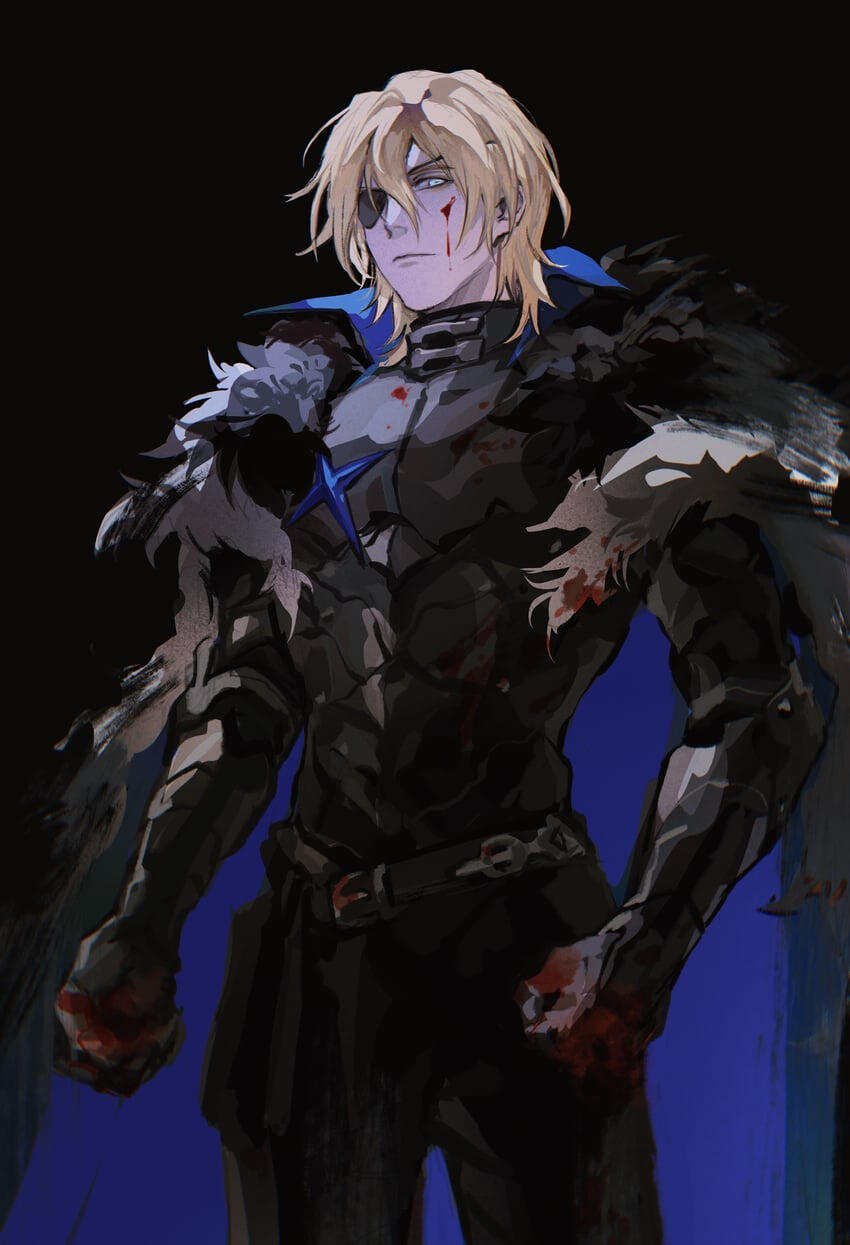
Goðligr Ráð ᚷᛟᚦᛚᛁᚷᚱ ᚱᚨᚦ Divine DomainsDivine Domains are the tethers between the Deity and what concepts they have a strong connection to. A lot of polytheistic deities for that reason try to grab as many as they can in order to empower themselves. Power is gained from the domain when it is either highly lauded, important for the functioning of the world, or highly feared. That is why elemental domains are sought out the most.Domains also serve as a two way road. As long as the object or concept exists, the god holding it will also exist, and as long as the god holding it exists, whatever concept or object is linked to the domain is ensured to exist. This in turn makes Gods reality anchors, with the only way to truly get rid of them being other gods or divine weapons. They are counters to reality bending abilities not spawned from other Domains. However, if the Domain is something artificial, like swords or cars, or something that is easy to destroy even without powers, it tends to be more fragile. The strongest domains are that of objects that live long, or of concepts.
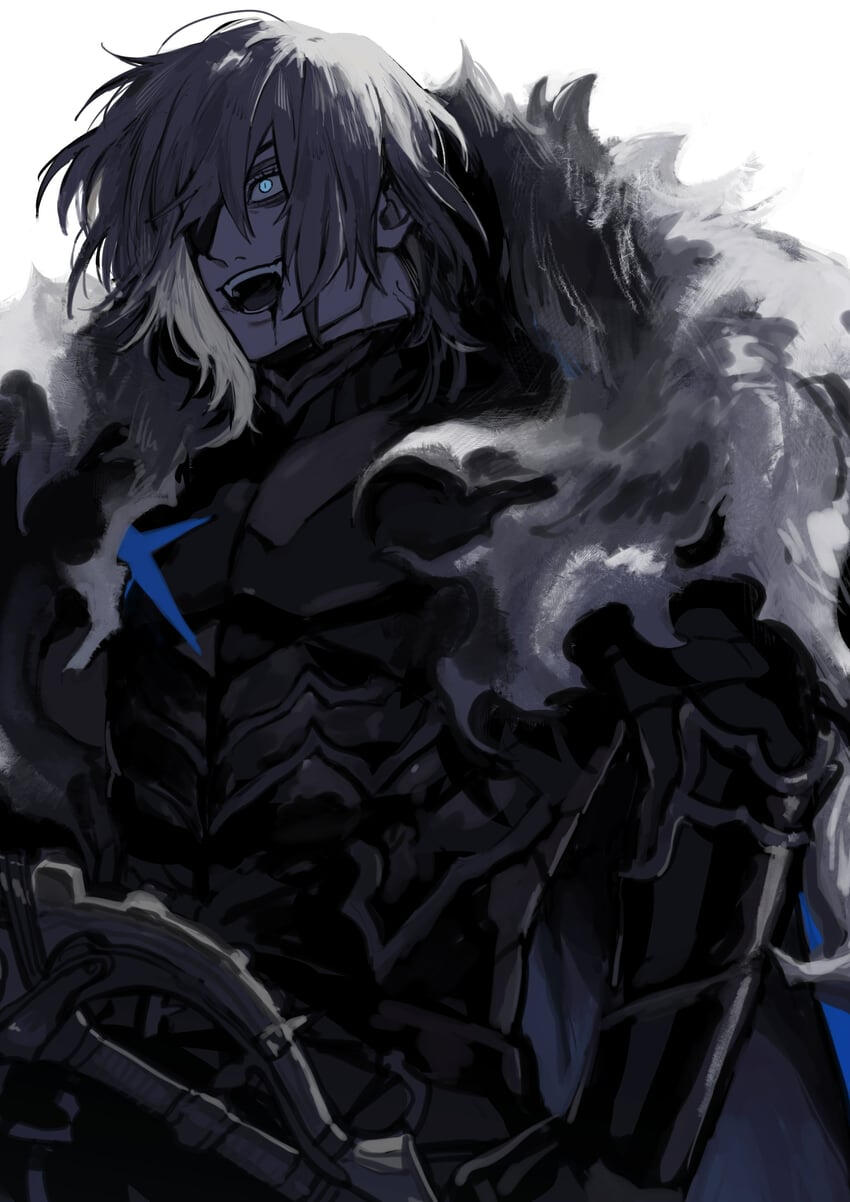
Odin's DomainsVisdomr ᚹᛁᛊᛞᛟᛗᚱ Wisdom
As a god of wisdom, Odin's memories will never fade even in the slightest, he cannot forget even the smallest of details. He could remember what he ate exactly on the 5th of December 643 BCE without prompt. Wisdom also allows him to automatically see through trickery and deception, he is an outright lie detector and can even decipher through intentions and wordplay. This makes him a terrible god to try and manipulate or obfuscate things from. On top of that, wisdom allows for precognition of the future, which is how Odin is aware of Ragnarok and its outcome.Stríð ᛊᛏᚱᛁᚦ War
As a God of War, one that reigns as the supreme one in his pantheon alongside his Wife, he is powered by conflict and can pull on its strings as if it were second nature. He is well versed in all matters and ways of warfare, even ones that have been invented in the recent and even modern era. Close Quarters, ranged, cyber, information, any type of warfare you may play he will likely beat his opponent in. It helps that this also generally massively empowers Odin in anything having to do with combat, so while he might not be a god of strength, he can match blows with the strongest through sheer skill and empowerment. War is also a conceptual domain due to its ever present nature in all life intelligent or organized enough to wage it, from lowly ants all the way to humans.Dauði ᛞᚨᚢᚦᛁ Death
Death is another primordial domain, and one of the most powerful at that, allowing the holder to outright erase the existence of others, or to imprison them in some sort of location serving as an afterlife. Death also allows one to destroy objects and concepts, being one of the domains said to be able to influence even things that can't perceive it, as everything one day can die. The Domain over Death also gives Odin control over the already dead themselves, should some necromancer try to throw their army at him for example he can just wrest control of it with no effort. Conversely, he himself can commune with and raise the dead as a well practiced necromancer himself. Odin after all holds no pretenses about the dead, and will use them for his purposes. Death combines with his domain in war, making him knowledgeable in how to decimate his foes in fatal ways no matter his state of preparedness. Lastly, Death gives him an extreme amount of survivability. Things that would put down gods of strength would absolutely and continuously struggle to try and snuff him out. He will remain at peak strength no matter his injuries, and will heal just fine after.Forysta ᚠᛟᚱᛁᛊᛏᚨ Poetry
Being a God of Poetry gives Odin artistic talent in writing, allowing him to make good poems and sagas, and being empowered the more of them exist in the world. Every time a long visual novel releases that gets an cult following, Odin smiles. Through this Odin is also able to communicate to humans through writings even in worlds where the divine are restricted from the material plane, allowing him to message his followers and others far more directly.Stormr ᛊᛏᛟᚱᛗᚱ Storms
This domain gives Odin all powers one could associate with storms. Natural water, wind, lighting, and ice manipulation that could spawn natural Armageddons that in their own right could be called Ragnarok. This domain is also the one closest associated with his title of being the Lord of the Wild Hunt. He gains power whenever there is turbulent weather, as well as one might expect, can cause it without difficulty. He can also make such weather cease and go away as well.Skáldskapr ᛊᚲᚨᛚᛞᛊᚲᚨᛈᚱ Leadership
There are very few gods who have a domain in leadership of some sort, with Odin being one of the lucky few who also leads their pantheon as well. This domain allows Odin to be an optimal leader in any situation, keeping his head cool even in treacherous situations. It also nags at him when those subordinate to him need guidance or help, as well as reveals optimal paths to take for punishment and reward. It also not only naturally empowers those subordinate to him, but allows him to empower them further through training or directly granting his magical power to them. Good Leadership of any kind, from non shitty managers, to country leaders who actually care about their people and do their best, all of it strengthens him.Óðr ᛟᚦᚱ Ecstasy
A god of ecstasy, in fact, the word forming the very beginning of his name. This domain is most connected of the definition of higher emotional states, explaining why he is so connected to people like artists, Berserkers, and other such individuals. The higher the feeling of ecstasy, the more powered he becomes, the more inspired an artist, the more maddened a Berserker, the more elated anyone may be beyond the scope of mere words, the more he gains power from such. Conversely, the more he himself feels those highs, the more power flows through his veins to ignore convention and rules entirely. This domain also completely inoculates him to even divine mind manipulation.Trolldómr ᛏᚱᛟᛚᛚᛞᛟᛗᚱ Witchcraft/Sorcery
Being one of the extremely few divines with a domain over magic directly, Odin is nearly unmatched in its application especially with its particular brand. With this domain Odin can learn any magic from any system, whether it is supposedly limited in some way or not. The only actual requirement is that he actually has to be taught it by someone, so long dead systems with no users or methods of bestowal cannot be learned by him. Below all his currently held magic shall be listed out.
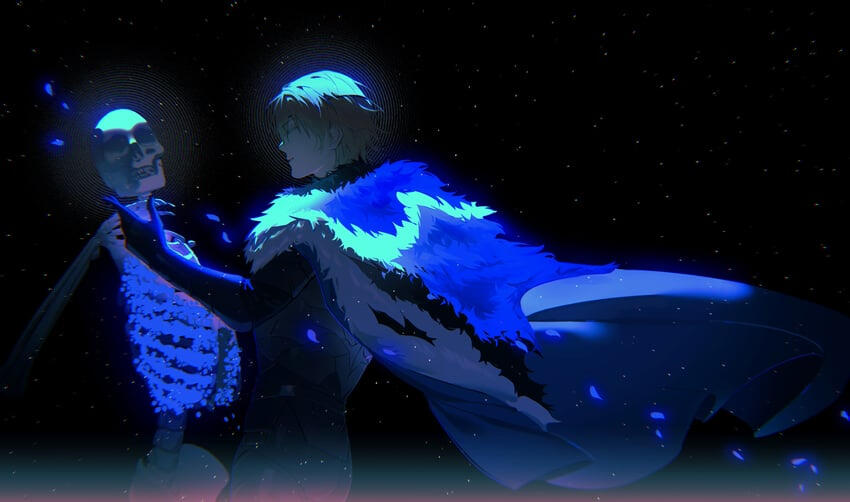
Blóta: This is sacrifice magic, something must be given up in order for an effect to occur. It can both be used to empower the gods when blót is done in their honor, no matter what is sacrificed. Body parts can individually be sacrificed as well.
Seiðr: Seiðr is a magic system that is rather loose compared to runes that are extremely structured. Should one have enough magical power, performing Seiðr spells is open ended, the only requirement is an incantation and/or a ritual. Odin often uses this magic system for less important spells like animal control, mild mind control, telepathy, shapeshifting, and other tertiary utility magic. It is often seen as a 'feminine' magic.
Primordial Runes: Runecraft is a type of magecraft utilizing the Scandinavian writing system, and actualizing the power within those letters. Primordial Runes are the ones written by the Allfather, Odin himself, and thus carry a lot of power. Runes by themselves already hold inherent powers and effects, but when combined together to form words in Old Norse, the effects can be more specialized, or more intense depending on the word. such an arrangement can be called a Rune Array. One can even improvise by using words in Icelandic or Faroese, since those languages are close to their root language, but those words won’t be as strong as the ancient words filled with mystery. For example, using a certain arrangement of runes, they can be used to transverse into alternate dimensions and multiverses.ᚠ (fehu): Makes it easy to amass wealth. It can also double as a energy stealing rules, putting it on an object, and then using that object to hit something else and steal its mana. The user can then absorb that mana themselves.ᚢ (uruz): Control over living tissue it is carved into, or that the rune touches. This can be used in conjunction with laguz for blood manipulation.ᚦ (thurisaz): The rune named after Thor, It serves to conduct and fire lighting, as well as serve as a runic version of battle continuation, even if mortally wounded beyond pale, the user can resuscitate themselves if enough energy is present.ᚱ (raido): Increases speed in general for the user, and if engraved upon a vehicle or mount, allows the rider to instantly gain the knowledge on how to maneuver it as well as making the ride/mount perform beyond its specificationsᚲ (kaunan): Uses darkness as weapons and defense, spawning constructs from shadows. It allows one to manipulate their own shadow as a weapon or the shadow of whatever the rune is carved into by the caster. It is charged up by being in darkness.ᚷ (gebo): Enables the user to transfer mana and restore the health of others.ᚹ (wunjo): Acts as a rune that wards the soul itself. Protects it from manipulation and mind reading.ᚺ, ᚻ (hagalaz): Rune of death, attacks the soul of the enemy and saps away at its strength. It cannot destroy a soul however.ᚾ (naudiz): Increases the probability of an outcome to occur for the caster, whether it is gambling, or a projectile hitting something. If put on a projectile, it will home in on the target.ᛁ (isaz): Spawns and manipulates Ice, either on the thing the rune is inscribed into, or as a projectile of some kind.ᛃ (jera): Accelerates or skips ahead in time, allows for the growing of plants and animals to be more robust and less time consuming.ᛇ (ihwaz): Manipulates plants and fungi. Can cause them to grow or wither in rapid succession. Useful for farming.ᛈ (perth): Rune that destabilizes the energy of whatever it is casted upon, causing potentially an explosion of magic, fuel, etc.ᛉ (algiz): Rune of protection, wards against physical attacks and magical attacks up to a point.ᛊ, ᛋ (sowilo): Runes of fire, can shoot it out from the runes, or have the object it is inscribed to burst into flames. Can also be generally used to heat up items or an area and not just light things up.ᛏ (tiwaz): Doubles as a rune of strength enhancement, as tiwaz is the rune for Tyr, a nordic god of war, as well as for use in contracts, since Tyr also reigns over laws.ᛒ (berkanan): Can be used to track individuals or objects, and is able to manipulate the ground including metals, rock, and dirt.ᛖ (ehwaz): Enhancement rune that allows even mundane objects to be deadly weapons. A chair enhanced with ehwaz can break apart a good broadsword.ᛗ (mannaz): Manipulates air and wind, forging blades of wind, or sheathing something in a layer of mana filled currents.ᛚ (laguz): Spawn and usage of water, shaping it into various objects and projectiles. It also can double as healing rune, the water cleaning out the wound before mending the flesh.ᛜ, ᛝ (ingwaz): Works as a charming rune, alongside also being able to to use it for shapeshifting as long as the resulting shape has the same mass.ᛟ (othala): Immediately creates a territory designated as under control of the user. They gain a massive boost to their power and stamina while in this territory, as well as finer control over their magic. They can designate others to be under this territory as well. It does not have a strong effect on enemies.ᛞ (dagaz): Light manipulation, allows one to create light constructs and to manipulate it to some degree.ᚨ (ansuz): This rune represents the Gods. Using it imbues divine power into whatever is used in conjunction including other runes. Here are its effects for each Rune.
Fehu: Expands the stealing of mana to cover all kinds of energy such as kinetic, fats, and others.
Uruz: Turns into outright necromancy in being able to control corpses.
Thurisaz: Can call lighting from the heavens to strike down opponents. Can also directly manipulate plasma.
Raido: Enables instant teleportation for the caster. Works in even bringing them to realms attached to their world, like any of the worlds of Yggdrasil.
Kaunan: Enables manipulation of the void and control over gravity. With enough power one can create black holes.
Gebo: Enables the user to directly insert a spell into the rune for someone else to use or learn.
Wunjo: Allows the soul of the caster to reincarnate into a newly constructed body the same as their old one.
Hagalaz: Removes the restriction of not being able to outright erase souls. Can also be used to convert souls into fuel.
Naudiz: Enables Clairvoyance, specifically future sight.
Isaz: Enables the freezing of time. with enough energy one can even reverse it.
Jera: Enables the use of Jera in a way where one is temporarily removed from causality so time skipped over using the rune is one where the caster is not effected.
Ihwaz: Enables user to make the plants more 'animal like' to make them useful to control in combat.
Perth: Can destabilize more than energy now, like for example DNA, atoms, and other structures.
Algiz: Imbues extremely high protection that it takes fellow divine spells and weaponry to break through the defense effectively.
Sowilo: Allows one to manipulate the Sun and other stars.
Tiwaz: Makes contracts under Tiwaz of a divine level, when broken punishments for both sides can be enforced no matter the distance.
Berkanan: Control over a large amount of earth material, can direct large meteors, cause earthquakes, and other natural disasters.
Ehwaz: Can be used in the smithing of divine level weaponry to make them near unbreakable. Like Gungnir, Mjolnir, and others.
Mannaz: Control over the local winds, can create tornadoes, storms, hurricanes, and other such catastrophes.
Laguz: Strong manipulation over almost any liquid, can use the rune now to control whole bodies of water. The healing is now able to restore missing chunks of the body including bones, organs, the flesh, blood, and even parts of the brain.
Ingwaz: Shapeshifting no longer has any normal limitations, just cannot use it to become more powerful in a bland way. Can change shape, size, physical properties, and a lot more. For example, turning oneself into multiple ravens, turning oneself into a bolt of lighting, so on so forth.
Othala: The territory under control of the user can apply universal rules to others entering it. Such as being unable to kill, not being able to be rude to the caster, and other reasonable rules that can be imposed by the caster.
Dagaz: Can still see things as if there was light even if it should be scientifically impossible, for example even in areas where it doesn't exist.
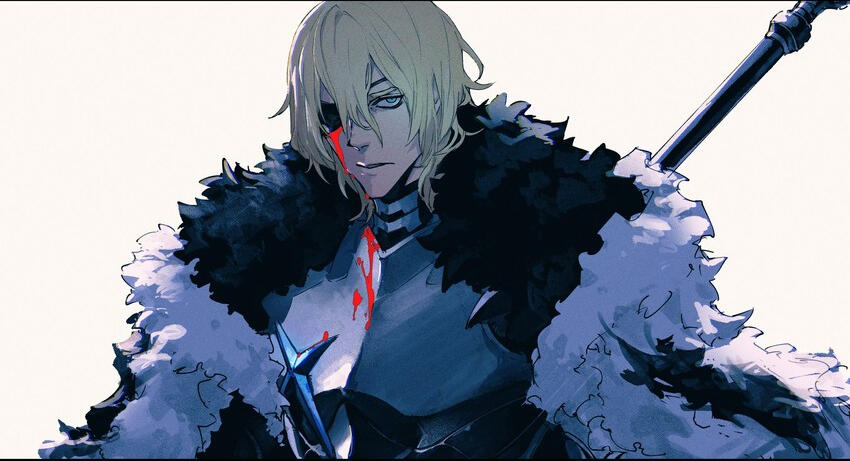
Goðvald ᚷᛟᚦᚹᚨᛚᛞ Divine AuthorityDivine Authorities are powers bestowed to a deity outside of their domain, usually this is either granted to them by a stronger god, their parent if they actually care about them, or ones gained by completing a great feat. Divine Authorities are not absolute powers like Divine Domains, and so if faced with one will crumple like paper. This is why a majority of Divine Combat utilizes Authorities first with a mix of Domain, before just becoming an outright Domain slugmatch.Goðlíkami ᚷᛟᚦᛚᛁᚲᚨᛗᛁ Divine Body
The standard divine authority lent to all gods, Divine Body. This massively boosts physical powers, gives environmental immunities, takes away the need for sustenance, and makes the person ageless. Odin's Authority of this including his Domains in war, death, and magic, make him immune to any conventional means of harm. Magic at the least has to be used.Ævarandi Stríðsmaðr ᚨᛒᚨᚱᚨᚾᛞᛁ ᛋᛏᚱᛁᚦᛋᛗᚨᚦᚱ Immortal Warrior
The Divine Authority linked to combat, one that many gods earn with time. It prevents the degradation of combat skills, and allows for the creation of techniques and moves that would otherwise be impossible. Such as cutting the air multiple times with sword swipes, or even your fingers. This is further enhanced with Odin's Domain in Wisdom and Magic make it so he just has outright muscle memory for anything combat related that can put the most trained mortal warriors to absolute shame.Herjaföðr ᚺᛖᚱᛃᚨᚠᛟᚦᚱ Father of Hosts
The Lord of the Wild Hunt, a Title that gives the wielder of it the Divine Authority of beast slaying. Monsters that would normally be too troublesome for mortals, demi gods, and outright fellow gods, are nothing before the holder of this authority. They are meat in a slaughterhouse, though they do put up a fight, they are destined to fall all the same to the Lord of the Wild Hunt.Hinn Aftrkomni ᚺᛁᚾᚾ ᚨᚠᛏᚱᚲᛟᛗᚾᛁ The Returned One
Many pagan gods suffered the fate of being forgotten and losing all their followers, but Odin was one of the lucky ones to be able to make a comeback long after his initial faith was trampled upon by the Abrahamic pantheon. This feat of returning from the brink massively empowers Odin's survivability to an extreme degree, especially as the head of the pantheon.Vikingr ᚹᛁᚴᛁᚾᚷᚱ
An authority shared with many of the other Norse Gods. This empowers Odin whenever he goes off to viking/adventure. It is an authority linked to their pantheon, and allows for Norse Gods to take the fight to the enemy rather successfully and in a way that they wouldn't expect them to be so empowered from.Útfarandi ᚢᛏᚠᚨᚱᚨᚾᛞᛁ Voyager
This is specifically an authority attributed to those who can travel outside of the reality and to other realities/dimensions/multiverses. This completely untethers them from their own world in having to rely on conceptual/worship filled existence only there, and draw on any realm they visit for those sort of things. This makes voyager gods some of the most dangerous to fight, with this authority trumping a lot of Domains due to how it empowers the existing Domains of a deity to the point it could beat one that counters it.Hæstr Meðal Goða ᚺᚨᛋᛏᚱ ᛗᛖᚦᚨᛚ ᚷᛟᚦᚨ Highest Among the Gods
A variation of this authority exists within every ruler of a pantheon, which is merely a denotation of their status and empowers them a bit more. The Greek version of this Authority is infamous for having passed through so many hands before Zeus gained it.
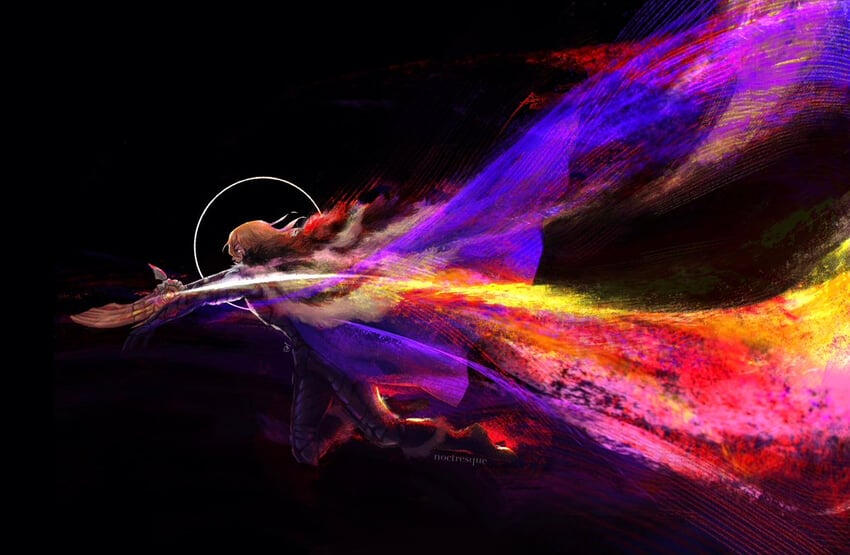
Himnesk Vápn ᚺᛁᛗᚾᛖᛋᚲ ᚹᚨᛈᚾ Heavenly WeaponsHeavenly Armaments are the weapons of the gods, ranging from Gungnir, the Blade of Olympus, Ea, or Ame no Murakumo no Tsurugi. They are extremely powerful weapons that were used in feats that would likely not be matched by human made weapons for quite a long time.Gungnir ᚷᚢᛝᚾᛁᚱ
Odin's iconic spear, the weapon that cannot miss its target, its destinated weaved into fate itself. So unless one can defy fate itself, dodging it would be a useless endeavor. Whether thrust or thrown, it will always hit its mark no matter what. It is also empowered by its legend, the weapon strong enough to destroy outright realms with ease should Odin want to. The Spear has strong properties against things threatening the world, allowing it to be one of the weapons that can be used extremely well in defense of a realm or Midgard.Gramr ᚷᚱᚨᛘᚱ
The Norse Sword of selection that once belonged to Sigurd. When the Völsunga Saga ended in tragedy, Odin regretfully reclaimed the sword, as well as made Sigurd and Brynhildr Einherjar. Sigurd due to being so easily tricked forsook his claim on the weapon, finding himself unworthy of it at this point. Gram is a weapon of the dark element, often confused to be demonic even though it has no Christian connection to any demon. It is a divine weapon that uses dark magic, and due to gutting Fafnir, is excruciatingly potent against dragons and anything dragon like.Óðins Brynja ᛟᚦᛁᚾᛋ ᛒᚱᛁᚾᛃᚨ Odin's Armor
The armor of the Lord of the Wild Hunt. It is extremely though and one would have extreme difficulty breaking through it, making it a staple for the King of the Æsir to wear it to protect himself on the fields of battle. The armor also empowers him further in a way, allowing Odin to be a true force of nature should he take up the sword.
Tengsl ᛏᛖᛝᚾᛋᛚ
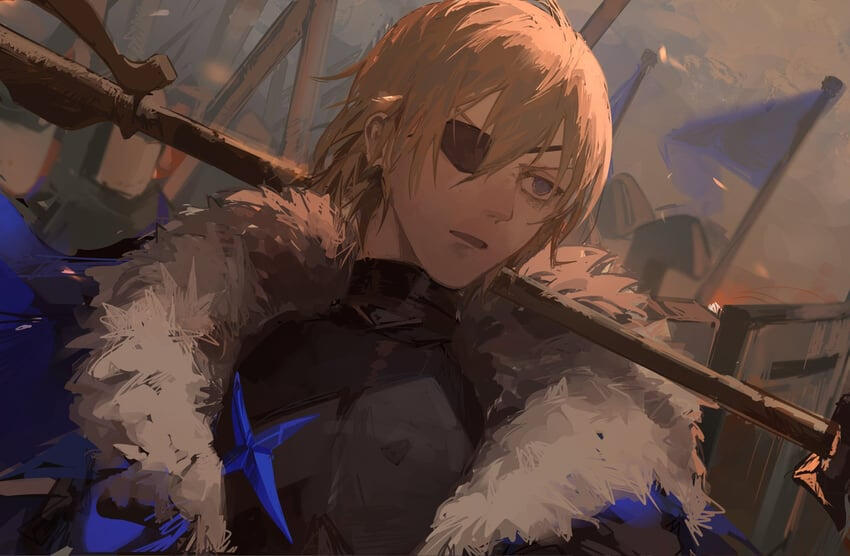
This is a repository of all RP relationships, platonic, romantic, familial, and more. If he has a relationship within Norse mythology, it will not be reflected here until established in RP. Note that the version of Odin used is the one where he is married to Freyja, rather than Frigg. A least for those not interested in getting in a relationship with him.
Ships
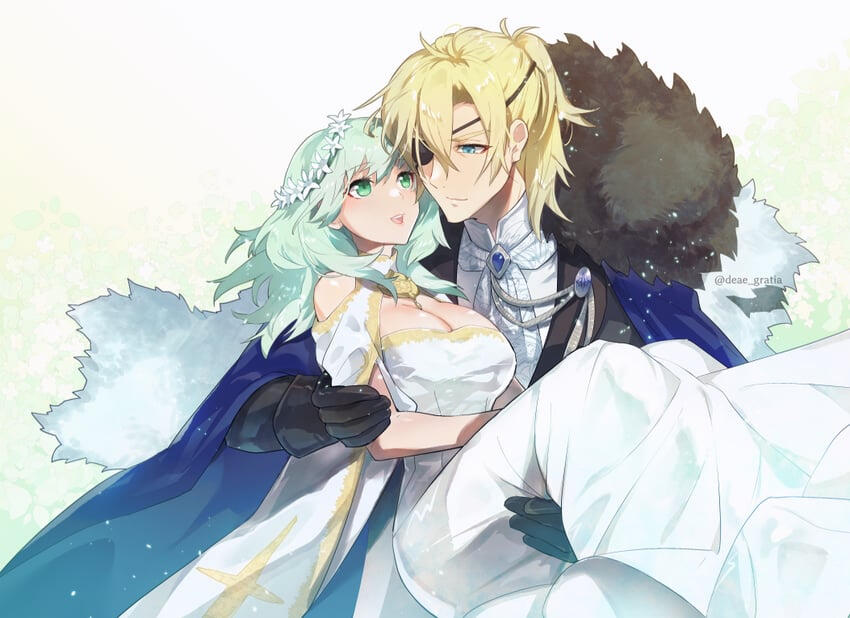
Main Ship, Freyja (@val_freja): The canonical romance for Odin. Freyja is his counterpart from the Vanir Gods, with the two tribes of divines having come to conflict long ago on their position over the Norse Worlds. Eventually, they came together when Odin and Freyja agreed to marry eachother, elevating both groups as equals within Asgard. Their romance is a rather fruitful one, bearing them many children, with them being so similar yet so different in their aspects that their love for eachother cannot be described as anything but 'frenzied' and 'fanatical'."Two parts of a Whole, two corpses in one Grave, a true union that is bound by the Soul, and only decipherable by the Brave."
Students
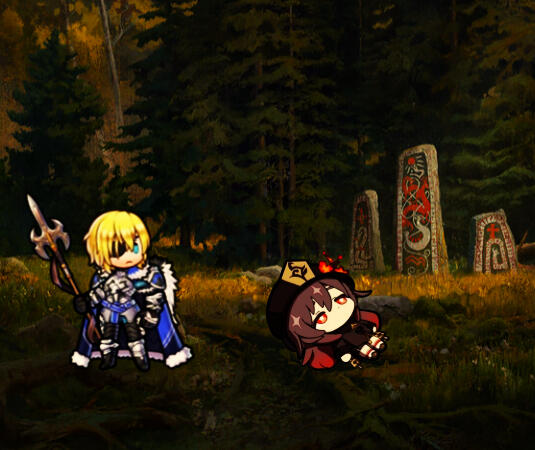
Hu Tao (@Thawoffragrence): A most unconventional student. Hu Tao is a bit opposing to Odin in a sense when it comes to the matters of death and the deceased. However, counterpoint, he finds her absolutely hilarious, and he as discussed, is a patron god to those usually on the outside of society. She may never become an ardent worshipper, but she is favored by the one eyed god. He taught her to become far more powerful beyond the mortal confines that shackled her before, and has granted his student his blessing in body and spirit. He still finds her assassination attempts on him amusing at least. The Allfather has already decided she shall become an Einherjar should she perish."Unknowingly following the footsteps of Charon. Fangs bared not in mere hunger, but respect of the life lived and dreams wasted."